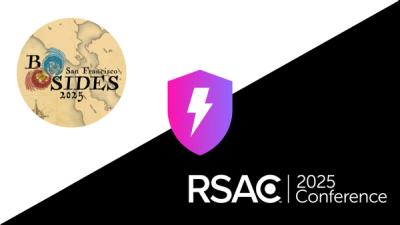
Security News
NVD Concedes Inability to Keep Pace with Surging CVE Disclosures in 2025
Security experts warn that recent classification changes obscure the true scope of the NVD backlog as CVE volume hits all-time highs.
@coveo/atomic-react
Advanced tools
A React component library for building modern UIs interfacing with the Coveo platform. Atomic React is a wrapper around the core Atomic web component library.
The integration of React-based projects (using JSX) with Web based components can be tricky. This project is meant to address this issue, making it possible to use Atomic web-components in a manner that feels more natural to developers familiar with React.
npm i @coveo/atomic-react
Since Atomic React is built on top of the core Atomic web-components library, the vast majority of concepts that apply to core Atomic will apply to Atomic React.
However, there are still some special considerations.
For performance reasons, the generated JavaScript bundle does not automatically include static assets that are loaded on demand. This impacts language support, as well as the use of included SVG icons.
It is mandatory that you make available external assets distributed with Atomic React by including them in the public directory of your app. Without this, for example, labels in the app will appear as temporary placeholders.
The location of the public directory depends on how you build, configure and distribute your app.
For example, for any project created with Create React App, this would mean copying language and icon assets to the ./public directory.
cp -r node_modules/@coveo/atomic-react/dist/assets public/assets
cp -r node_modules/@coveo/atomic-react/dist/lang public/lang
It is important to respect the folder hierarchy, with SVG icons under the assets subdirectory, and labels and languages under the lang subdirectory of the public folder.
Rendering different types of result templates based on the type of content returned by the Coveo platform is very common when building a Coveo search page.
The way to create result templates for an HTML project using the core Atomic library involves defining one or multiple atomic-result-template components, configured with HTML properties, adding conditions on the attributes and metadata of each results.
Coupled with the <template> HTML tag, this works very well in a pure HTML project.
However, this can be limiting and awkward to use in a React project using JSX.
Atomic React exposes an AtomicResultList component with a template property that can be used in a more straightforward manner when coupled with JSX.
The template property accepts a function with a Result parameter, which can then be used to conditionally render different templates based on properties and fields available in result items.
The template function must then simply return a valid JSX Element.
Here is an example of a fictitious search page, which defines some premade templates for YouTube videos, as well as Salesforce cases:
import {
Result,
AtomicResultSectionVisual,
AtomicResultImage,
AtomicResultSectionTitle,
AtomicResultLink,
AtomicResultSectionBottomMetadata,
AtomicText,
AtomicResultNumber,
AtomicFormatUnit,
AtomicResultSectionExcerpt,
AtomicResultText,
AtomicResultSectionEmphasized,
AtomicSearchInterface,
AtomicResultList,
buildSearchEngine,
getSampleSearchEngineConfiguration,
} from '@coveo/atomic-react';
const MyResultTemplateForYouTubeVideos: React.FC<{result: Result}> = ({
result,
}) => {
return (
<>
<AtomicResultSectionVisual>
<AtomicResultImage field="ytthumbnailurl" />
</AtomicResultSectionVisual>
<AtomicResultSectionTitle>
<AtomicResultLink />
</AtomicResultSectionTitle>
{result.raw.ytvideoduration !== undefined && (
<AtomicResultSectionBottomMetadata>
<AtomicText value="Duration" />
<AtomicResultNumber field="ytvideoduration">
<AtomicFormatUnit unit="minute" />
</AtomicResultNumber>
</AtomicResultSectionBottomMetadata>
)}
</>
);
};
const MyResultTemplateForSalesforceCases: React.FC<{result: Result}> = ({
result,
}) => {
return (
<>
<AtomicResultSectionTitle>
<AtomicResultLink />
</AtomicResultSectionTitle>
<AtomicResultSectionExcerpt>
<AtomicResultText field="excerpt" />
</AtomicResultSectionExcerpt>
<AtomicResultSectionEmphasized>
{result.raw.sfpriority !== undefined && (
<>
<AtomicText value="Priority" />
<AtomicResultText field="sfpriority" />
</>
)}
{result.raw.sfstatus !== undefined && (
<>
<AtomicText value="Status" />
<AtomicResultText field="sfstatus" />
</>
)}
</AtomicResultSectionEmphasized>
</>
);
};
const MyDefaultTemplate: React.FC<{}> = () => {
return (
<>
<AtomicResultSectionTitle>
<AtomicResultLink />
</AtomicResultSectionTitle>
<AtomicResultSectionExcerpt>
<AtomicResultText field="excerpt" />
</AtomicResultSectionExcerpt>
</>
);
};
const MyResultTemplateFunction = (result: Result) => {
if (result.raw.filetype === 'YoutubeVideo') {
return <MyResultTemplateForYouTubeVideos result={result} />;
}
if (result.raw.objecttype === 'Case') {
return <MyResultTemplateForSalesforceCases result={result} />;
}
return <MyDefaultTemplate />;
};
const MyPage = () => {
const engine = buildSearchEngine({
configuration: getSampleSearchEngineConfiguration(),
});
return (
<AtomicSearchInterface engine={engine}>
<AtomicResultList template={MyResultTemplateFunction} />
</AtomicSearchInterface>
);
};
Due to the way Atomic Web components use Shadow Dom and CSS parts to provide encapsulation, it is necessary to follow these guidelines when you wish to style elements inside any result template.
This option works well if you do not need to create any CSS rule that would need to target the Shadow parts of an Atomic result component.
For example, if you want to modify the color of all result links in a template to pink, you could do so like this:
import {
AtomicResultLink,
AtomicSearchInterface,
AtomicResultList,
buildSearchEngine,
getSampleSearchEngineConfiguration,
} from '@coveo/atomic-react';
const MyStyledResultLink: React.FC<
React.ComponentProps<typeof AtomicResultLink>
> = (props) => {
return (
<AtomicResultLink {...props} style={{color: 'pink'}}>
{props.children}
</AtomicResultLink>
);
};
const MyPage = () => {
const engine = buildSearchEngine({
configuration: getSampleSearchEngineConfiguration(),
});
return (
<AtomicSearchInterface engine={engine}>
<AtomicResultList
template={(result) => {
return <MyStyledResultLink />;
}}
/>
</AtomicSearchInterface>
);
};
This approach lets you wrap any core Atomic component inside a styled one, which you can then re-use in one or more templates. This could be done with inline styling as shown here, or with more advanced techniques such as using CSS modules.
Using React.ComponentProps<typeof AnyAtomicComponent> allows you to extract any props that the core component exposes, and augment them if need be.
This option works in all scenarios, and allows you to target any Shadow parts that an Atomic result component exposes, in a similar manner to using plain HTML.
The following is an example that makes the text of an AtomicResultBadge pink:
import {
buildSearchEngine,
getSampleSearchEngineConfiguration,
AtomicSearchInterface,
AtomicResultList,
AtomicResultBadge,
} from '@coveo/atomic-react';
const myStyles = `
atomic-result-badge::part(result-badge-element) {
color: pink;
}
`;
const MyPage = () => {
const engine = buildSearchEngine({
configuration: getSampleSearchEngineConfiguration(),
});
return (
<AtomicSearchInterface engine={engine}>
<AtomicResultList
template={(result) => (
<>
<style>{myStyles}</style>
<AtomicResultBadge />
</>
)}
/>
</AtomicSearchInterface>
);
};
The Atomic React search interface component exposes an optional localization option, which takes a callback function that lets you handle localization.
import {AtomicSearchInterface} from '@coveo/atomic-react';
<AtomicSearchInterface
localization={(i18n) => {
i18n.addResourceBundle('en', 'translation', {
search: "I'm feeling lucky!",
});
}}
></AtomicSearchInterface>;
FAQs
React specific wrapper for the Atomic component library
The npm package @coveo/atomic-react receives a total of 4,337 weekly downloads. As such, @coveo/atomic-react popularity was classified as popular.
We found that @coveo/atomic-react demonstrated a healthy version release cadence and project activity because the last version was released less than a year ago. It has 0 open source maintainers collaborating on the project.
Did you know?

Socket for GitHub automatically highlights issues in each pull request and monitors the health of all your open source dependencies. Discover the contents of your packages and block harmful activity before you install or update your dependencies.

Security News
Security experts warn that recent classification changes obscure the true scope of the NVD backlog as CVE volume hits all-time highs.

Security Fundamentals
Attackers use obfuscation to hide malware in open source packages. Learn how to spot these techniques across npm, PyPI, Maven, and more.

Security News
Join Socket for exclusive networking events, rooftop gatherings, and one-on-one meetings during BSidesSF and RSA 2025 in San Francisco.